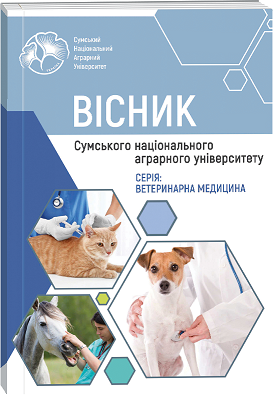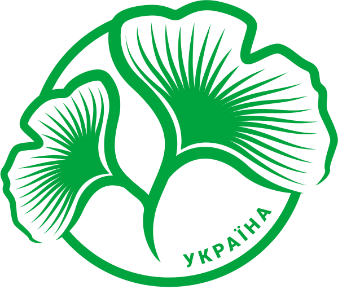HISTOLOGICAL CHANGES IN THE STRUCTURE OF THE REPRODUCTIVE SYSTEM OF DRONES UNDER THE CONDITIONS OF CONTAMINATION WITH THE AMERICAN ROT (PAENIBACILLUS LARVAE)
Abstract
The developmental anatomy and histological studies of the reproductive system of both insects in general and honey bee drones in particular have been fairly well documented by earlier scientists. It is known that the reproductive system was described by the scientist Jan Swammerdam in his own posthumous publication back in the 18th century, where it was written that the reproductive organs consist of paired gonads, conducting ducts and tubules, some additional gonads and the endophallus itself. Scientists such as Zander, Bishop, and Snodgress described the anatomical feature of the development of drone testes at the larval stage and their histological structure, and in 2020, the scientist Lago described a more detailed atlas according to the process of spermatogenesis and the actual development of drone testes before they emerge from cells It should be noted that the functional units of the testes of drones are actually the tubules of the testicles, they are also called testicular follicles or even spermatozoa. It is known that actually hundreds of tubules enter the vas deferens through anatomically located individual seminiferous tubules, which in turn pass together with the basilar tubule and pass to the apical tubule, actually to the periphery of the testicle. But the study of normal histology does not give a complete picture of the development of the drone's reproductive system. As a rule, they are not sufficiently well described in literary sources. It should be noted that the influence of various types of bee diseases on the development of the reproductive system of the drone is not described in the literature. The article describes the main phases of changes in tissues during puberty under conditions of contamination with American rot. Histological changes of the testicle during maturation are characterized by the following main consecutive phases: the first phase is characterized by the completion of spermiogenesis, the second phase is the exit of spermatozoa into the lumen of the tubes, the next third phase shows the corresponding progressive atrophy of follicular cells and the last phase itself – complete atrophy and, accordingly, collapse. Tubular changes occur in a basilar to apical direction, with segments closer to the vas deferens being histologically more mature than the corresponding apical segments. In addition, it should be noted that the peculiar rate of development of maturation of reproductive organs can change with seasonal progression. This study of the progressive atrophy of the reproductive system of the drone can be useful for future breeders, as the histological study shows the result of contamination with the causative agent of rotting disease, which actually has negative results and can affect the breeding performance of the bee colony.
References
2. Bauer, D. M., & Wing, I. S. (2016). The macroeconomic cost of catastrophic pollinator declines. Ecological Economics, 126, 1-13.
3. Belsky, J., & Joshi. (2019). Impact of biotic and abiotic stressors on managed and feral bees. Insects, 10(8), 233.
4. Bossert, S., Wood, T. J., Patiny, S., Michez, D., Almeida, E. A., Minckley, R. L., & Murray, E. A. (2022). Phylogeny, biogeography and diversification of the mining bee family Andrenidae. Systematic Entomology, 47(2), 283-302.
5. Brown, M. J., Dicks, L. V., Paxton, R. J., Baldock, K. C., Barron, A. B., Chauzat, M. P., & Stout, J. C. (2016). A horizon scan of future threats and opportunities for pollinators and pollination. PeerJ, 4, e2249.
6. da Santos, R. S., Carneiro, L. T., de Oliveira Santos, J. P., da Silva, M. M., de Oliveira Milfont. (2021). Bee pollination services and the enhancement of fruit yield associated with seed number in self-incompatible tangelos. Scientia Horticulturae, 276, 109743.
7. Eeraerts, M., Vanderhaegen, R., Smagghe, G., & Meeus, I. (2020). Pollination efficiency and foraging behaviour of honey bees and non-Apis bees to sweet cherry. Agricultural and Forest Entomology, 22(1), 75-82.
8. Eilers, E. J., Kremen, C., Smith Greenleaf, S., Garber, A. K., & Klein, A. M. (2011). Contribution of pollinator-mediated crops to nutrients in the human food supply. PLoS one, 6(6), 21-63.
9. Fenech, M., Amaya, I., Valpuesta, V., & Botella, M. A. (2019). Vitamin C content in fruits: Biosynthesis and regulation. Frontiers in plant science, 9, 2006.
10. Goulson, D., & Hughes, W. O. (2015). Mitigating the anthropogenic spread of bee parasites to protect wild pollinators. Biological Conservation, 191, 10-19.
11. Horth, L., & Campbell, L. A. (2018). Supplementing small farms with native mason bees increases strawberry size and growth rate. Journal of Applied Ecology, 55(2), 591-599.
12. Isaacs, R., Williams, N., Ellis, J., Pitts-Singer, T. L., Bommarco, R., & Vaughan, M. (2017). Integrated crop pollination: combining strategies to ensure stable and sustainable yields of pollination-dependent crops. Basic and Applied Ecology, 22, 44-60.
13. Kerr, J. T., Pindar, A., Galpern, P., Packer, L., Potts, S. G., Roberts, S. M. (2015). Climate change impacts on bumblebees converge across continents. Science, 349(64), 177-180.
14. Kisil, D. О. (2023). Funhitsydna diya tsyklichnykh peroksydiv na rist entomopatohennoho hryba ascosphaera apis. [Fungicidal action of cyclic peroxides on the growth of the entomopathogenic fungus ascosphaera apis]. Sumy: Bulletin of Sumy National Agrarian University. The series: Veterinary Medicine, 4 (63), 62-67 [in Ukrainian].
15. Kisil, D. О., & Nazarenko, S. М. (2023). Patomorfolohichni zminy kyshkivnyka bdzholy ta imunna vidpovidʹ na mikrosporydioz nozema apis. [Pathomorphological changes of the bee intestine and immune response to microsporidia nosema apis]. Sumy: Bulletin of Sumy National Agrarian University. The series: Veterinary Medicine, 3 (62), 44-49 [in Ukrainian].
16. Kwon, H., Kim, T. K., Hong, S. M., Se, E. K., Cho, N. J., & Kyung, K. S. Effect of household processing on pesticide residues in field-sprayed tomatoes. Food Science and Biotechnology, 24, 1-6.
17. Lago, D. C., Martins, J. R., Dallacqua, R. P., Santos, D. E., Bitondi, M. M., & Hartfelder, K. (2020). Testis development and spermatogenesis in drones of the honey bee, Apis mellifera. L. Apidologie, 51, 935-955.
18. Metz, B. N., & Tarpy, D. R. (2019). Reproductive senescence in drones of the honey bee (Apis mellifera). Insects, 10(1), 11.
19. Moors, L., Koeniger, G., & Billen, J. (2012). Ontogeny and morphology of the bulbus, part of the male reproductive organ in Apis mellifera carnica (Hymenoptera, Apidae). Apidologie, 43, 201-211.
20. Osterman, J., Theodorou, P., Radzevičiūtė, R., Schnitker, P., & Paxton, R. J. (2021). Apple pollination is ensured by wild bees when honey bees are drawn away from orchards by a mass co-flowering crop, oilseed rape. Agriculture, Ecosystems & Environment, 315, 107383.
21. Pitts-Singer, T. L., Artz, D. R., Peterson, S. S., Boyle. (2018). Examination of a managed pollinator strategy for almond production using Apis mellifera (Hymenoptera: Apidae) and Osmia lignaria (Hymenoptera: Megachilidae). Environmental Entomology, 47(2), 364-377.
22. Power, K., Martano, M., Altamura, G., & Maiolino, P. (2020). Histopathological findings in testes from apparently healthy drones of Apis mellifera ligustica. Veterinary Sciences, 7(3), 124.
23. Redhead, J. W., Dreier, S., Bourke, A. F., Heard, M. S., Jordan, W. C. (2016). Effects of habitat composition and landscape structure on worker foraging distances of five bumble bee species. Ecological Applications, 26(3), 726-739.
24. Snodgrass, R. E. (2018). Principles of insect morphology. Cornell University Press, 41, 202-221.
25. Suvarna, K. S., Layton, C., & Bancroft, J. D. (2018). Bancroft's theory and practice of histological techniques. Elsevier health sciences, 11, 20-41.
26. Tang, J., Quan, Q. M., Chen, J. Z., Wu, T., & Huang, S. Q. (2019). Pollinator effectiveness and importance between female and male mining bee (Andrena). Biology letters, 15(10), 20-47.
27. Turley, N. E., Biddinger, D. J., Joshi, N. K., & López-Uribe, M. M. (2022). Six years of wild bee monitoring shows changes in biodiversity within and across years and declines in abundance. Ecology and Evolution, 12(8), e9190.
28. Turley, N. E., Biddinger, D. J., Joshi, N. K., & López-Uribe, M. M. (2022). Six years of wild bee monitoring shows changes in biodiversity within and across years and declines in abundance. Ecology and Evolution, 12(8), e9190.
29. Wade, A., Lin, C. H., Kurkul, C., Regan, E. R., & Johnson. (2019). Combined toxicity of insecticides and fungicides applied to California almond orchards to honey bee larvae and adults. Insects, 10(1), 20.
30. Zattara, E. E., & Aizen, M. A. (2021). Worldwide occurrence records suggest a global decline in bee species richness. One Earth, 4(1), 114-123.

 ISSN
ISSN  ISSN
ISSN 



